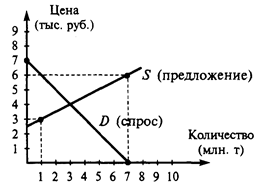Perinatal Sources of Insatiable Greed
In the course of biographically oriented psychotherapy, many people discover that their life has been inauthentic in certain specific sectors of interpersonal relations. For example, problems with parental authority can lead to specific patterns of difficulties with authority figures, repeated dysfunctional patterns in sexual relationships can be traced to parents as models for sexual behavior, sibling issues can color and distort future peer relationships, and so on.
When the process of experiential self-exploration reaches the perinatal level, we typically discover that our life up to that point has been largely inauthentic in its totality, not just in certain partial segments. We find out to our surprise and astonishment that our entire life strategy has been misdirected and therefore incapable of providing genuine satisfaction. The reason for this is the fact that it was primarily motivated by the fear of death and by unconscious forces associated with biological birth, which have not been adequately processed and integrated. In other words, during biological birth, we completed the process anatomically, but not emotionally.
When our field of consciousness is strongly influenced by the underlying memory of the struggle in the birth canal, it leads to a feeling of discomfort and dissatisfaction with the present situation. This discontent can focus on a large spectrum of issues - unsatisfactory physical appearance, inadequate resources and material possessions, low social position and influence, insufficient amount of power and fame, and many others. Like the child stuck in the birth canal, we feel a strong need to get to a better situation that lies somewhere in the future.
Whatever is the reality of the present circumstances, we do not find it satisfactory. Our fantasy keeps creating images of future situations that appear more fulfilling than the present one. It seems that, until we reach it, life will be only preparation for a better future, not yet “the real thing.” This results in a life pattern that people involved in experiential self-exploration have described as a “treadmill” or “rat-race” type of existence. The existentialists talk about “auto-projecting” into the future. This strategy is a basic fallacy of human life. It is essentially a loser strategy, whether or not we achieve the goals that we have set for ourselves, since it does not deliver the satisfaction that is expected from it.
When the goal is not reached, the continuing dissatisfaction is attributed to the fact that we have failed to reach the corrective measures. When we succeed in reaching the goal of our aspirations, it typically does not have much influence on our basic life feelings. The continuing dissatisfaction is then blamed either on the fact that the choice of the goal was not correct or that it was not ambitious enough. The result is either substitution of the old goal with a different one or amplification of the same type of ambitions. We can not get enough of what we really do not want or need.
In any case, the failure is not correctly diagnosed as being an inevitable result of a fundamentally wrong strategy, which is in principle incapable of providing satisfaction. This fallacious pattern applied on a large scale is responsible for reckless irrational pursuit of various grandiose goals that results in much suffering and many problems in the world. It can be played out on any level of importance and affluence, since it never brings true satisfaction. The only strategy that can significantly reduce this irrational drive is full conscious reliving and integration of the trauma of birth in systematic inner self-exploration.
|




